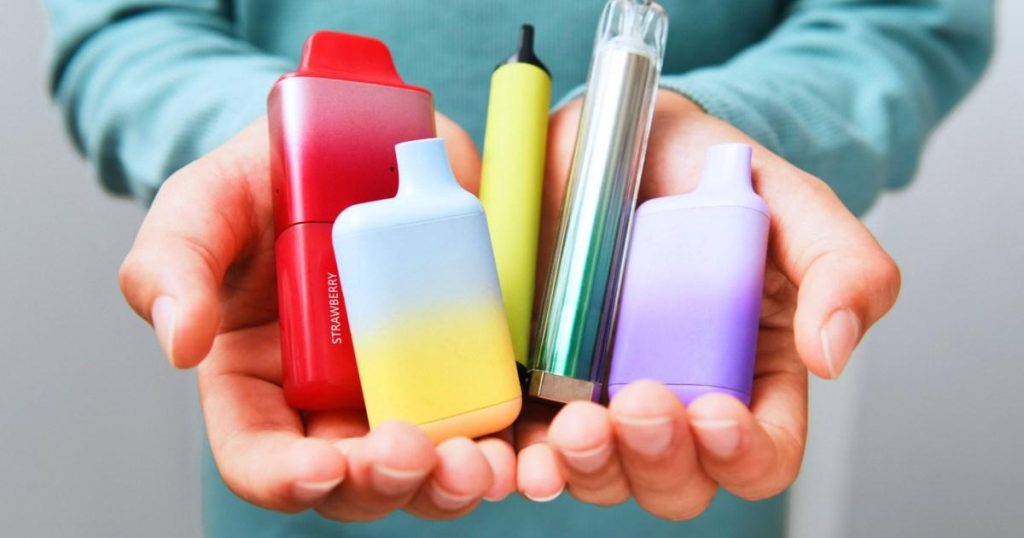Paragraph 1: The Allegations and Police Investigation
Lancashire Police have launched an investigation into disturbing allegations that a man distributed vapes containing spice and ketamine to students in the Pendle Borough. The incident gained public attention after reports surfaced of three students requiring hospitalization, prompting widespread concern and warnings circulated on social media platforms. Authorities have confirmed their awareness of the social media posts and assured the public that they are treating the allegations seriously, initiating an investigation into the matter. The incident has also sparked a wave of anxiety and fear among parents and students in the area.
Paragraph 2: The Dangers of Spice and Ketamine
Spice, often marketed deceptively as a synthetic cannabis alternative, poses significant health risks. Unlike cannabis, which is derived from a plant, spice consists of a mixture of herbs or shredded plant material sprayed with man-made mind-altering chemicals. These synthetic cannabinoids comprise a family of approximately 700 research chemicals, making their effects unpredictable and potentially dangerous. Ketamine, another drug allegedly present in the vapes, is an anesthetic misused as a recreational drug, particularly in club and rave settings. Commonly snorted as a powder or injected as a liquid, ketamine can induce distorted perceptions of sight and sound, leading to feelings of dissociation from one’s surroundings. The presence of these substances in vapes poses a serious threat to unsuspecting users, especially young people.
Paragraph 3: Vape Spiking: A Growing Concern
The alleged incident in Lancashire highlights the growing concern of vape spiking, a phenomenon involving the surreptitious addition of drugs to vaping devices. Vapes have become a recent target for spiking incidents, with alarming statistics revealing over 6,700 reported cases in the first half of 2023 alone in England and Wales. This concerning trend raises significant safety issues, as individuals unknowingly inhale harmful substances, often leading to severe health consequences. The novelty of this phenomenon means that much remains unknown about its prevalence and mechanics, leaving experts and authorities struggling to fully understand and address the problem.
Paragraph 4: The Challenges of Addressing Vape Spiking
The relative newness of vape spiking presents substantial challenges for prevention and response efforts. Helena Conibear, chief executive of the Alcohol Education Trust, acknowledges the limited understanding surrounding vape spiking, stating that "very little is known" about this emerging phenomenon. The lack of awareness about how vape spiking operates hinders the development of effective strategies to combat it. This knowledge gap also underscores the urgent need for research and investigation to better understand the scope, methods, and consequences of vape spiking. Increased public awareness is crucial in empowering individuals to take precautions and report suspected incidents.
Paragraph 5: The Impact on Victims and Calls for Action
The consequences of vape spiking can be devastating, leaving victims with physical and psychological trauma. Last year, numerous individuals bravely shared their harrowing experiences, shedding light on the urgent need for increased action to address this growing threat. These accounts underscore the importance of providing support services for victims and strengthening preventative measures to ensure their safety. Calls for greater awareness campaigns, stricter regulations on vape sales and distribution, and increased vigilance in public spaces are gaining momentum.
Paragraph 6: The Broader Context of Drug-Related Concerns
The Lancashire incident intersects with other pressing issues related to drug use and harm reduction. News reports highlight the ongoing challenges of drug-related violence, as illustrated by a recent school shooting involving a teenage gunman. On a more positive note, stories of successful harm reduction strategies, such as the implementation of drug consumption rooms in some countries, offer potential pathways for addressing drug-related challenges. These contrasting narratives underscore the complex interplay of factors contributing to drug use and the need for a multi-faceted approach to prevention, treatment, and harm reduction. The alleged distribution of drug-laced vapes serves as a stark reminder of the ever-evolving landscape of drug-related threats and the importance of vigilance and proactive measures to protect vulnerable populations.




